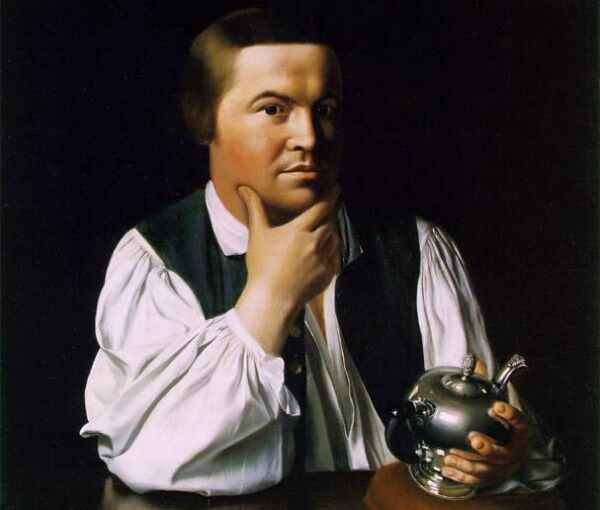What's the Real Story of Paul Revere's Midnight Ride?

Sarah Palin recently claimed that Paul Revere's famous midnight ride was intended to warn British soldiers that Colonial Americans were on the attack. Revere, she told the press in Boston, "warned the British that they weren't going to be taking away our arms, by ringing those bells and making sure as he's riding his horse through town to send those warning shots and bells that we were going to be secure and we were going to be free and we were going to be armed."
This account, which she seemed to present as a sort of argument against gun control, clashes with the version most of us know — the one where Revere warned the Americans about the British (not the other way around) by riding to Lexington to notify patriot soldiers that the Red Coats were headed their way.
In follow-up interviews, Palin has refused to admit that she is in any way off the mark with her version of history. So, did she get the details of Revere's ride wrong?
Yes, for the most part. The Paul Revere House, a historical museum in Boston, officially summarizes the revolutionary ride thusly: "On the evening of April 18, 1775, Paul Revere was sent for by Dr. Joseph Warren and instructed to ride to Lexington, Massachusetts, to warn Samuel Adams and John Hancock that British troops were marching to arrest them … On the way to Lexington, Revere 'alarmed' the country-side, stopping at each house, and arrived in Lexington about midnight." [Read: How Do Other Countries Celebrate Their Independence?]
It's a different picture than the one Palin painted. However, historian Nina Zannieri, the director of the Paul Revere House, told us that there are grains of truth dispersed here and there in the former Alaskan governor's account, which she may have picked up during her recent visit to Boston's Old North Church.
Regarding Palin's comments about Revere warning the British, Zannieri said she may have been recalling an event that happened later in the night, well after Revere's midnight ride. "Revere was actually stopped and his horse was taken away and he was questioned by British soldiers," Zannieri told Life's Little Mysteries, a sister site of LiveScience. "In that instance he told them that there were a lot of [patriot soldiers] waiting for them. Some people would say this was a threat or a warning."
Furthermore, Palin's comment about ringing bells during the ride might be a distortion of the fact that he was a bell ringer at Old North Church as a youth. "In some communities, bells were used to call an alarm, though not in [Boston]," Zannieri said. "In this instance, of course, Revere's ride was done at night and quietly so that it wouldn't be noticed. But by the time the militiamen were assembled on the Lexington Green" — i.e. the next morning — "it's possible bells might have been ringing."
Get the world’s most fascinating discoveries delivered straight to your inbox.
For the same reason he probably didn't ring a bell as he rode, he likewise probably didn't shout, "The British are coming!" Aside from not wanting to draw unwanted attention from British troops, on April 18, Revere and his fellow alarm-riders would not have cried out "The British are coming!" as most of them still believed they were British at that point in time.
Palin's distortions of the facts probably aren't so unusual, Zannieri pointed out. "One thing I can say is that the whole midnight ride story is gotten wrong very often. People mistake events from Henry Longfellow's famous poem with what actually happened that night."
"It's easy for a non-historian to get history a little bit wrong," she continued, "and it seems like a lot of media attention for something that is probably not high on the Richter scale of importance."
This story was provided by Life's Little Mysteries, a sister site of LiveScience. Follow Natalie Wolchover on Twitter @nattyover
Natalie Wolchover was a staff writer for Live Science from 2010 to 2012 and is currently a senior physics writer and editor for Quanta Magazine. She holds a bachelor's degree in physics from Tufts University and has studied physics at the University of California, Berkeley. Along with the staff of Quanta, Wolchover won the 2022 Pulitzer Prize for explanatory writing for her work on the building of the James Webb Space Telescope. Her work has also appeared in the The Best American Science and Nature Writing and The Best Writing on Mathematics, Nature, The New Yorker and Popular Science. She was the 2016 winner of the Evert Clark/Seth Payne Award, an annual prize for young science journalists, as well as the winner of the 2017 Science Communication Award for the American Institute of Physics.



